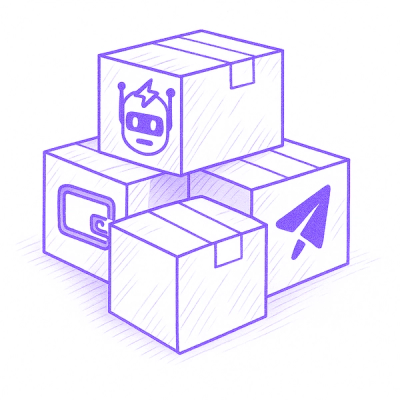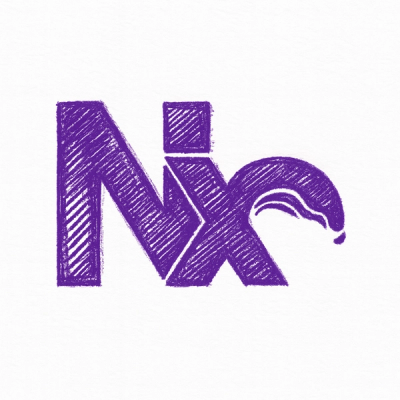
Research
Malicious npm Packages Impersonate Flashbots SDKs, Targeting Ethereum Wallet Credentials
Four npm packages disguised as cryptographic tools steal developer credentials and send them to attacker-controlled Telegram infrastructure.
Probably the easiest and cheapest way to build a testing UI and documentation for your tRPC v11.0 endpoints. tRPC ui automatically generates a UI for manually testing your tRPC backend with 0 overhead:

trpc panel moves as fast as your trpc backend with minimal effort.
Check out our demo app
This is a fork of the original tRPC panel project, which is now unmaintained. The original author deserves credit for the vast majority of the work done on this project.
superjson support.Install as a dev dependency with your preferred package manager:
npm install -D trpc-ui
yarn add -D trpc-ui
pnpm install -D trpc-ui
bun add -d trpc-ui
render your panel and return it from your backend as a text response (express example). You can also ensure that the panel is only available in development using dynamic imports and checking the NODE_ENV:
app.use("/panel", (_, res) => {
if (process.env.NODE_ENV !== "development") {
return res.status(404).send("Not Found");
}
// Dynamically import renderTrpcPanel only in development
const { renderTrpcPanel } = await import("trpc-ui");
return res.send(
renderTrpcPanel(myTrpcRouter, {
url: "http://localhost:4000/trpc", // Base url of your trpc server
meta: {
title: "My Backend Title",
description:
"This is a description of my API, which supports [markdown](https://en.wikipedia.org/wiki/Markdown).",
},
})
);
});
trpc-ui just renders as a string, so it can be used with any backend.
To document your entire backend, you can pass in a metadata object with a title and description. To document individual procedures, see the documenting procedures.
Make sure you specify whether or not you are using superjson as a data transformer.
Create a route handler somewhere like src/app/api/panel/route.ts
import { NextResponse } from "next/server";
import { appRouter } from "~/server/api/root";
export async function GET() {
if (process.env.NODE_ENV !== "development") {
return new NextResponse("Not Found", { status: 404 });
}
const { renderTrpcPanel } = await import("trpc-ui");
return new NextResponse(
renderTrpcPanel(appRouter, {
url: "/api/trpc", // Default trpc route in nextjs
transformer: "superjson", // Enabled by default with create-t3-app
}),
{
status: 200,
headers: [["Content-Type", "text/html"] as [string, string]],
}
);
}
Then we can visit the url http://localhost:3000/api/panel to use the panel.
Create an api route somewhere like src/pages/api/panel.ts and send a text response:
import type { NextApiRequest, NextApiResponse } from "next";
import { appRouter } from "../../server/api/root";
export default async function handler(_: NextApiRequest, res: NextApiResponse) {
if (process.env.NODE_ENV !== "development") {
return res.status(404).send("Not Found");
}
const { renderTrpcPanel } = await import("trpc-ui");
res.status(200).send(
renderTrpcPanel(appRouter, {
url: "/api/trpc",
transformer: "superjson",
})
);
}
trpc-ui supports documenting procedures.
Documentation is opt-in, meaning you only need to set it up if you want to use it. When docs are included for your trpc procedure, a "Docs" section will appear in your procedure:

trpc-ui supports documenting procedures via trpc meta. First setup your trpc instance to be typed with TRPCPanelMeta:
import { initTRPC } from "@trpc/server";
import { TRPCPanelMeta } from "trpc-ui";
const t = initTRPC.meta<TRPCPanelMeta>().create();
Then in your routers you can provide a description to the meta:
export const appRouter = t.router({
sayHello: t.procedure
.meta({ /* 👉 */ description: "This shows in the panel." })
.input(z.object({ name: z.string() }))
.query(({ input }) => {
return { greeting: `Hello ${input.name}!` };
});
});
Most descriptions don't need more than basic text, but descriptions for procedures and procedure descriptions can render markdown. This is most often useful for adding links within descriptions, but all markdown is supported thanks to react-markdown.
.meta({ /* 👉 */ description: "# H1 heading\nSome normal, or maybe **bold** text below, and a [link](https://trpc.io/docs) to something important" })
trpc-ui supports documenting parameters via zod's .describe() method. This allows developers to quickly write documentation as they're writing schemas:
export const appRouter = t.router({
sayHello: t.procedure
.input(z.object({
name: z.string().describe("The name to say hello too.")
}))
.query(({ input }) => {
return { greeting: `Hello ${input.name}!` };
});
});
Whatever you pass to describe() will appear in the docs section. Any input fields without a description will not appear in the docs section.
Trpc panel supports superjson, just pass it into the transformer option:
app.use("/panel", (_, res) => {
return res.send(
renderTrpcPanel(myTrpcRouter, {
url: "http://localhost:4000/trpc",
transformer: "superjson",
})
);
});
When you are using superjson, the json editor will show a basic wrapping of superjson input. Your actual json input goes under the json key, and information about how fields should be parsed goes under the meta key. Do not delete the json key or enter your input outside of it, or else your input will not be parsed correctly.
{
"json": {},
"meta": {
"values": {}
}
}
Let's say on your backend, you want to have a zod validator like this, which supports data types not supported by json directly.
import { z } from "zod";
const UserSchema = z.object({
id: z.bigint(),
name: z.string(),
createdAt: z.date(),
tags: z.set(z.string()),
metadata: z.map(z.string(), z.string()),
});
type User = z.infer<typeof UserSchema>;
const user: User = {
id: BigInt("9007199254740991"),
name: "John Doe",
createdAt: new Date("2025-03-16T12:00:00Z"),
tags: new Set(["admin", "active"]),
metadata: new Map([
["lastLogin", new Date("2025-03-15T08:30:00Z")],
["loginCount", 42],
["isPremium", true],
["tier", "gold"],
]),
};
Enter the json supported equivalent under the json key, and and specify how they should be parsed under the meta.values key. Before validating this data on the backend, superjson will deserialize it back into JavaScript bigints, dates, sets, and maps, meaning it will pass your zod validation!
{
"json": {
"id": "9007199254740991",
"name": "John Doe",
"createdAt": "2025-03-16T12:00:00.000Z",
"tags": ["admin", "active"],
"metadata": [["tier", "gold"]]
},
"meta": {
"values": {
"id": ["bigint"],
"createdAt": ["Date"],
"tags": ["set"],
"metadata": ["map"]
}
}
}
You will likely need to uncheck "validate input on client" in order to be able to send your validation to the backend when using custom superjson inputs
Also be warned that currently, input fields will not be rendered for superjson only inputs. You will have to input all data manually through the json editor.
trpc-ui welcomes and encourages open source contributions. Please see our contributing guide for information on how to develop locally. Besides contributing PRs, one of the most helpful things you can to is to look at the existing feature proposals and leave a 👍 on the features that would be most helpful for you.
trpc-openapi is designed for producing a REST API for external consumption from your trpc routers, not quickly testing your backed. If you do not care about exposing your API outside of your application, the additional overhead required to use trpc-openapi is not worth the effort. trpc-ui can be used with trpc-openapi, but the two libraries serve different purposes.
trpc-playground is a great tool for testing your queries, but it requires writing code in the browser. trpc-ui automatically generates intuitive typesafe forms for your procedures, allowing you to run tests without writing any code.
Currently, tRPC panel only works with zod input schemas. Eventually, the goal is to support any validation library that implements the Standard Schema spec. However, this will likely require lots of rewrites, as the current codebase is tightly integrated with Zod.
The following are supported
We would like to add the following types:
FAQs
UI for testing tRPC backends
The npm package trpc-ui receives a total of 9,461 weekly downloads. As such, trpc-ui popularity was classified as popular.
We found that trpc-ui demonstrated a healthy version release cadence and project activity because the last version was released less than a year ago. It has 1 open source maintainer collaborating on the project.
Did you know?

Socket for GitHub automatically highlights issues in each pull request and monitors the health of all your open source dependencies. Discover the contents of your packages and block harmful activity before you install or update your dependencies.

Research
Four npm packages disguised as cryptographic tools steal developer credentials and send them to attacker-controlled Telegram infrastructure.

Security News
Ruby maintainers from Bundler and rbenv teams are building rv to bring Python uv's speed and unified tooling approach to Ruby development.

Security News
Following last week’s supply chain attack, Nx published findings on the GitHub Actions exploit and moved npm publishing to Trusted Publishers.